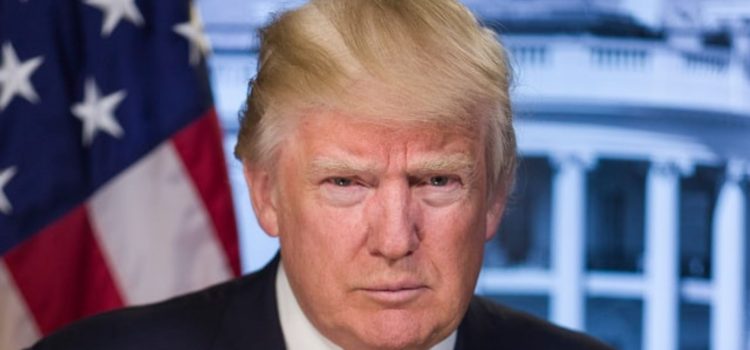

This article is an excerpt from the Shortform book guide to "A Warning" by Anonymous. Shortform has the world's best summaries and analyses of books you should be reading.
Like this article? Sign up for a free trial here .
When did Donald Trump take office? What were his early days as a president like?
Trump was inaugurated on January 20, 2017. His transition wasn’t exactly smooth: factions and conspiracies developed in the early days; and the White House became a real-life version of Trump’s former TV show, The Apprentice.
Keep reading to learn about Trump’s transition and the early days as a president of the United States.
Early Days in the White House
Donald Trump took office on January 20, 2017, and signs of trouble begin emerging even in the formative stages of the Trump presidency.
The Trump transition team was behind from the start because they were inexperienced, unprepared, and didn’t expect him to win. Then, Trump dumped his team leader, New Jersey Governor Chris Christie, replacing him with Mike Pence, the vice president-elect. Pence had to start from square one.
Things were in disarray, and instead of forming a Lincolnesque “team of rivals,” Trump ended up with “rival teams” jockeying for advantage. From the early days, Trump encouraged infighting.
Nonetheless, a cadre of respected, experienced Republicans signed on with the administration, resulting in a fairly competent cabinet. Their presence helped ease worries about his disruptive style and also diminished some of the infighting.
But because they didn’t know Trump, the newcomers were unreasonably optimistic they would be able to focus on governing. Immediately upon interacting with the new chief executive, they could see something was off. Trump remained obsessed with his victory, carrying around electoral maps, which he introduced into nearly every discussion. He continued to focus on defeated opponent Hillary Clinton as well as on his predecessor, Obama.
Quickly displaying his impulsiveness, Trump issued a stream of executive orders intended to negate Obama policies, slash regulations, and spark economic growth. While many on staff agreed in principle, the orders were poorly conceived and some backfired. An example was the travel ban on people from “terrorist” countries. It prompted a public outcry and legal action, and cost the administration time and goodwill.
Then, Trump decided to put Steve Bannon, his chief political strategist, on the National Security Council, although the council isn’t supposed to be political. Trump’s experienced staffers were appalled, and although he backed down later, they remained wary of what else he might do.
In Trump’s chaotic world, the newcomers joined in a sort of alarmed fraternity akin to bank robbery hostages united in fear of the unknown.
‘Five-Alarm Fire Drills’
The Steady State isn’t sabotaging the president. It’s not the Deep State feared by the Right nor a campaign to subvert the president, as the Left might wish. Early on, the Steady State formed “to keep the wheels from coming off the White House wagon.”
By conferring with each other informally, members of the Steady State realized the administration’s problems were systemic, driven by two traits—Trump’s impulsiveness and inattention.
Both traits surfaced when staff tried to brief the president on issues. Briefers soon learned that Trump wouldn’t read long papers or even summaries. They needed to present information in a handful of PowerPoint slides with few words plus graphics to get his attention. The key was to reduce their messages to a single point and keep repeating it, even when Trump veered off on another topic.
If a briefer didn’t keep things short and sweet, Trump was likely to shout, “What the f-ck,” and throw the papers at the presenter. If he liked a simple graphic he’d talk about it constantly, carry it around to show others, and even tweet it. For instance, he fixated on a graphic depicting interlocking gears to explain government and industry relationships. He kept showing it to puzzled Oval Office visitors. Another time he tweeted out a parody poster on Iran sanctions, built on a Game of Thrones theme. This resulted in memes mocking the graphic. The lesson for the Steady State was that they were “glorified government babysitters.”
Staff referred to the process of dealing with a sudden Trump impulse to do something rash as a “five-alarm fire drill.” If they received any notice, they’d mobilize an effort to influence his views before he tweeted them out. In the early days of the administration, a five-alarm fire drill might work like this:
- Trump sees something on television that bothers him. He starts thinking, for instance, that he should fire the secretary of commerce or withdraw from an international agreement.
- He tells the next person he sees, who is shocked. Staff spread the word—“he’s about to do something”—and convene a meeting or teleconference.
- Then, selected aides conduct an intervention with the president.
- Trump may insist on his own way, regardless of consequences. But sometimes, after extreme warnings, he begins to relent. Rather than admit error, he only agrees to a delay or a somewhat less dire plan, temporarily averting disaster.
This process became the norm and was so exhausting for aides that they’d schedule unneeded campaign rallies to get Trump out of town, where he would theoretically cause less trouble. This gave his staff a breather. However, it wouldn’t be long before he’d raise the bad idea again. Today, Trump gives little or no notice of his decisions.
A Dysfunctional Executive Branch
Trump showed no interest in or ability to manage daily functions of government. This continues to be a problem. He can’t lead because he doesn’t understand how the executive branch works.
Departments and agencies are confused about what to do and who’s in charge. Trump may tell the secretary of defense to do something that’s the job of the secretary of state. He sometimes tells son-in-law Jared Kushner to do the jobs of multiple people. Policies aren’t thought out or coordinated; issues are ignored until they reach a crisis point. With its haphazard processes, the administration is prone to violating laws, ethics, and normal procedure.
Some aides and supporters want to believe there’s a method to Trump’s madness, which will be revealed in time—that “it’s part of his genius.” Senior advisor and campaign holdover Stephen Miller encourages chaos as a deliberate strategy. For instance, early on, he urged that the White House “flood the zone” with as many policy pronouncements as possible, regardless of legality, to overwhelm Democrats. Top officials soon began trying to insulate their departments from Trump’s mismanagement and inappropriate requests.
Dumb, Impossible, or Illegal
Members of the Steady State have observed that the president’s requests typically fall into one of three categories: dumb, impossible, or illegal. Here are some examples:
- Dumb: Trump wanted to shut down the government because he was upset with congressional budget negotiations. However, it would mean losing Republican congressional seats in the midterm election, as public services and paychecks for federal employees stalled and dissatisfaction spread. Trump backed down, but resurrected the idea later.
- Impossible: In February 2018, Trump proposed arming teachers to end gun violence in schools. This was impractical because of the training that would be required, the cost of the guns, and the likelihood it would make the situation worse. Fortunately, no one jumped on board with the idea, so he dropped it.
- Illegal: Sometimes, Trump makes unlawful proposals because he doesn’t understand federal law. For instance, he might order an agency to stop spending money on a particular program, which he can’t do if Congress has approved the funds. Along that line, he’s repeatedly tried to stop foreign aid to certain countries.
Proposals that are dumb, impossible, and illegal, often revolve around the issue of immigration, which Trump views as the greatest crisis in U.S. history. For example, he wanted to designate immigrants as “enemy combatants”—the designation used for terrorists—so the administration could keep them out of the country. He brought it up randomly, eliciting “those polite smiles reserved for a deranged relative.”
When he didn’t get pushback, Trump discussed shipping immigrants to Guantanamo Bay as a deterrent to trying to enter the U.S. Word got out and a career diplomat characterized it as “completely batshit.” Advisors told him it was too expensive because Trump sometimes found cost arguments persuasive. They managed to squelch the proposal, although there’s never any guarantee a bad idea is gone for good.
Some of Trump’s worst ideas could have cost him his presidency if implemented. Yet the people working to protect him from this were the ones he ended up wanting to fire.
The Apprentice: The White House Version
Trump delights in the image from his reality television days that he’s a tough boss ready to fire anyone and everyone. He likes to keep officials on edge or make them do what he wants by commenting publicly on their job performance or tenure. Or he fuels gossip by complaining about someone, knowing that listeners will spread it. White House officials are always on “deathwatch,” waiting to be fired by presidential tweet. Victims change from week to week.
Chief of Staff John Kelly managed briefly to counter Trump’s ad hoc decision-making with a system. However, trying to improve the process was just applying a Band-Aid. Changing the system couldn’t fix Trump. In the spring of 2018, he reverted to keeping people on edge and in line, his way. He eliminated anyone who seemed to challenge him, including Secretary of State Rex Tillerson, National Security Advisor H.R. McMaster, and Attorney General Jeff Sessions; others like Defense Secretary James Mattis left of their own accord.
Trump announced Kelly would be gone soon, although he had trouble finding a new chief of staff and finally appointed budget director Mick Mulvaney in an acting capacity. Trump’s third national security advisor, John Bolton, resigned when he got tired of the chaos and Trump’s bungling of foreign policy. Trump tried to make it look like he fired Bolton.
Adult Supervision Dwindles
With the guard rails created by the Steady State disappearing, the future began looking grimmer. Bad ideas have become more frequent and few people speak up other than those who tell Trump what he wants to hear. Yet the president of the most powerful country in the world needs to hear dissent.
The Steady State was never going to be able to guide Trump or bring order to the White House. His staff can’t change who he is. In reality, playing the role of the “adults in the room” and “keeping the president in check” isn’t the Steady State’s job.
It’s the job of the voters and their elected representatives, who express their faith or lack of faith at the ballot box. Each of the remaining chapters in this book examines important aspects of the president’s character and performance that should inform this decision.

———End of Preview———
Like what you just read? Read the rest of the world's best book summary and analysis of Anonymous's "A Warning" at Shortform .
Here's what you'll find in our full A Warning summary :
- An inside look at the chaotic Trump administration written by a senior Trump administration official
- An examination of Trump's authoritarianism and threats to democracy
- The three options that existed for removing Trump from office






